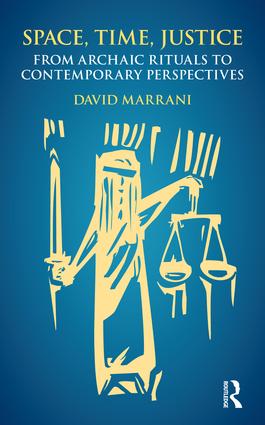We are now closed for the Christmas and New Year period, returning on Monday 5th January 2026. Orders placed during this time will be processed upon our return on 5th January.

If what is important for justice is to be seen to be done, the place where justice is or is supposed to be rendered has a pivotal part to play in its administration. The place of justice for neo-Classical architects was a Palace of Justice, ‘speaking through allegorical and metaphorical forms’, contrasting the ‘temple illuminated by justice’ and the ‘dark places devoted to crime’. Spaces of justice are sacred places transcended through ideas of power and authority. This complex system of values is, via rituals, connected to the ‘speaking architecture’: the building, which imposes the solemnity of the state, illuminating this authority. The focus of this book is to reexamine the spaces of justice.
The author merges philosophical, psychoanalytical and legal perspectives to explore how these spaces have changed and continue to change and the effect that this has on the development of justice. There are three central themes: Judicial spaces and rituals of justice: the relation between time and space in the trial; contemporary spaces of justice: use and abuse of transparency; and the abolition of the judicial walls: cameras in courts and the reshaping of judicial spaces. The book discusses how moving from a ceremonial, very formal judge, in a temple-like court building, to a business-like judge in an office-like court building affects the position of the judge. It questions whether or not a judge in a contemporary building, or a judge viewed through cameras, represents society in the same way as it used to. The work offers a comparative approach, looking at the judge in the spaces of justice, both in the civil and common law traditions.
This book presents a theoretical study of spaces of justice and as such will appeal to academics in the fields of law, criminology, sociology and architecture.